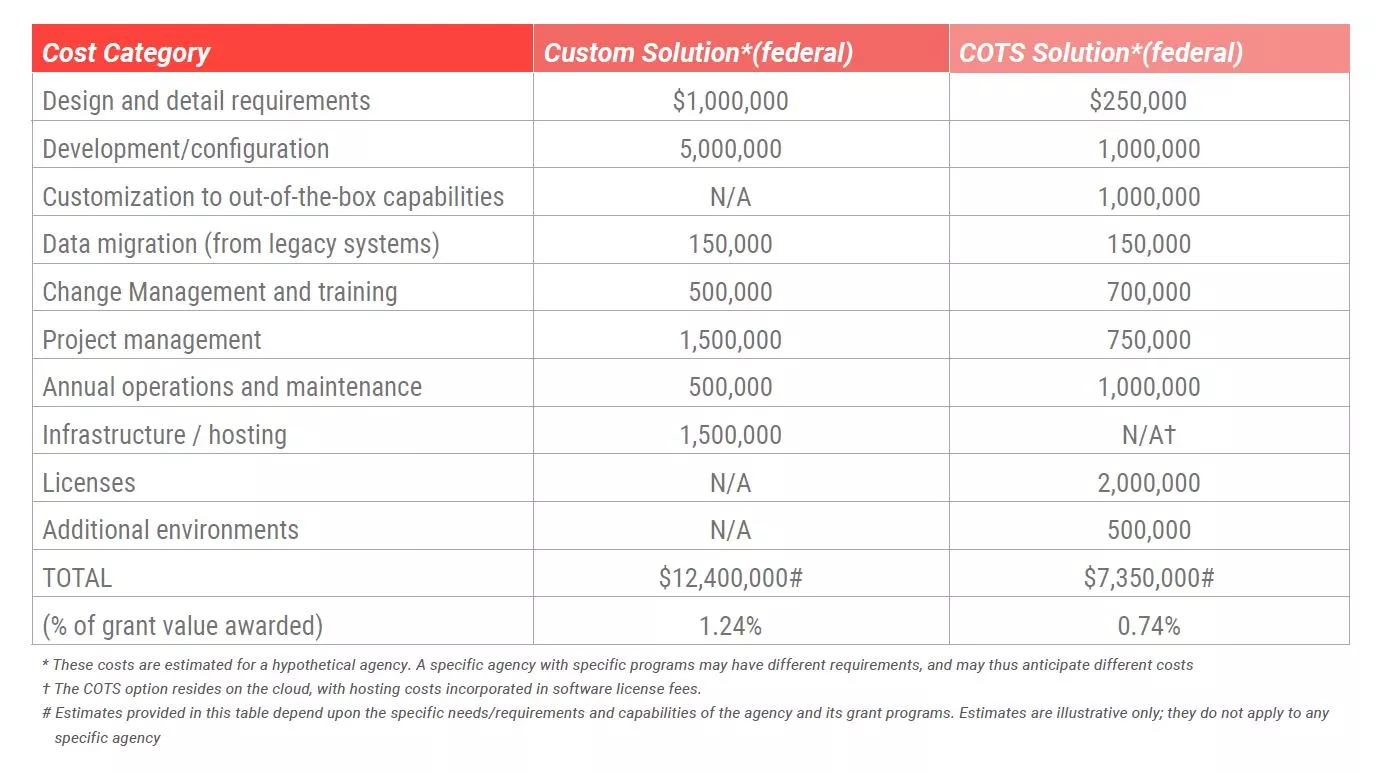With the recent emergence of the Grant Reporting Efficiency and Assistance Transparency Act (the GREAT Act) from committee in Congress, along with passage of the Digital Accountability and Transparency Act (the DATA Act) of 2014, federal lawmakers are zeroing in on the need for greater visibility into how more than
$660 billion of grant funds are deployed each year. Legislators want to make reporting on grant outcomes— measuring the actual impact of these billions of grant dollars—easier to do and more consistent through standardization of requirements and the digitization of data.
At the heart of this transformation is information technology. The right IT solution will not only help ensure grant funding is properly disbursed to the appropriate grantees, but also improve oversight and reporting to maximize grant results. After all, grant funds are aimed at specific policy priorities—funding research into cures for disease, delivering educational services to underserved communities, stimulating economic growth and new business starts and more. As such, the job of the grant manager should be helping grantees achieve the program mission, not manipulating a spreadsheet to send to Congress
While embracing an IT-based solution (instead of relying on paper and spreadsheets) to better manage grants is becoming a pervasive sentiment at all levels of government, the proliferation of options for grant solutions makes choosing a platform time-consuming and complex.
This article details how government agencies can make a grants management solution choice in light of the growing need to modernize. Based upon preferences, structure and business realities, agencies can determine whether they should lean toward a custom IT solution or if an off-the-shelf option may be a better choice.
Based upon 20+ years of experience designing, developing and deploying grants management solutions for government, we have found that most agencies—federal, state and local—have varying grants management technology needs. A few of those needs are important signals that can point to the type of solution that will best serve any particular agency.
CUSTOM VS. COTS SELF ASSESSMENT
To evaluate whether an agency’s needs would be better met by a predominantly custom solution or a predominantly commercial, off-the-shelf solution, IT managers should use the following 5-point scale to assign a rating of agreement with the “characteristic” statements below, where a 1 indicates great agreement and a 5 indicates great disagreement.
SCORING THE SELF-ASSESSMENT
A score of 12 or below indicates a strong preference for COTS options.
A score of 24 or above indicates a strong preference for custom solutions.
A score of 13-23 indicates that a hybrid, platform-based solution may be the best solution. Indeed, many customers determine that the path forward is not in the extremes but in the middle of spectrum.
While many of these dimensions are qualitative, the “cost appetite” dimension can be made somewhat quantifiable. The actual cost to design, develop, test, implement and support a solution can vary widely based upon specifications and requirements. The cost tradeoffs between custom solutions and COTS options can be broken down into a high-level set of cost categories:
To provide a rough order of magnitude of the cost to implement a grants management solution for a single agency, the high-level estimates by cost category below illustrate the differences between custom and COTS solutions.
COST COMPARISONS FOR A HYPOTHETICAL GRANT MANAGEMENT SOLUTION
For ease of comparison, we estimated costs for a medium-sized federal grant-making agency that issues $1 billion in grants annually, with 500 agency users and 2,000 grantees. We also assumed that the medium-sized agency’s scores for the first five topics in the self-assessment framework shown above is 3 in each case (i.e., neutral). Different scores for those self-assessment topics will impact the costs shown below.
HYBRID SOLUTIONS ARE MORE COMMON THAN EITHER PURE CUSTOM OR PURE COTS
It is very rare for any grants management solution to be entirely custom or purely COTS. Some facet of every federal agency’s processes requires tailoring—there is almost never “one size fits all.” But certain features (e.g., pre-award risk assessment or grant close-out) often can be re-used from solutions implemented at other agencies or elsewhere within the same agency. Thus the COTS and custom alternatives are in reality the boundaries of a continuum. The majority of grants management solutions in government that have been deployed recently as part of a modernization effort are hybrid, falling between the two extremes.
Platform-based solutions are gaining momentum in the marketplace. In particular, these solutions offer configuration-based, out-of-the-box modules and capabilities (to accelerate implementation) but also allow for customization (to meet program-specific and agency-specific business realities). These types of solutions can offer the “best of both worlds” and allow agencies to successfully straddle their business realities today as well as serve as a bridge to their needs tomorrow.
The drive for greater transparency and visibility into the impact of grants is an important initiative will deliver great benefits to all constituencies involved—grant makers, grant recipients and the public at large. Grant dollars sustain critical services relied upon by millions of Americans. They provide much of the operational funding required to keep our government functioning at all levels. Making the right technology decision—to buy, build, or configure—will only accelerate the push toward better grant outcomes.






